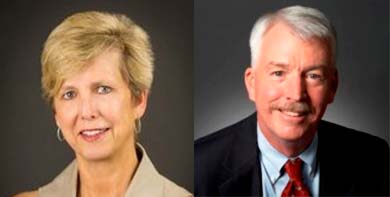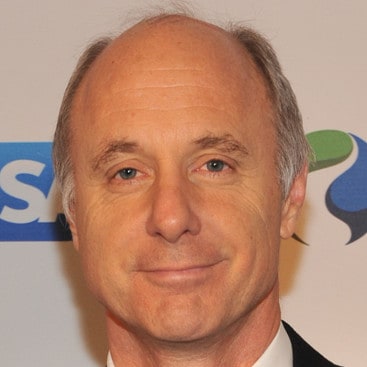Last week was the climax of an extraordinary month during which TheReasonsWhy.Us was embraced by a string of pediatric cancer, environmental health groups and scientists who under the coordination of the American Sustainable Business Council have launched the Childhood Cancer Prevention Initiative and its first paper, Childhood Cancer – Cross-Sector Strategies for Prevention. We are no longer alone!!
Around two dozen people participated in the report and at a personal level I would like to salute one of its key drivers, pioneering children’s environmental health advocate Anne Robertson, of Toxic Free Future for Our Children and MaxCure Foundation, who has introduced thereasonswhy.us to leading national and international cancer researchers – including the legendary Dr Phil Landrigan (thanks to whose crusading efforts lead was removed from gasoline).
The report examines the impacts of toxic chemicals on children’s health and charts a course for prevention via research, education, development of safer chemistries, business innovation and strong public policies.
In particular, it encourages chemical producers, manufacturers and retailers to turn off the tap on toxic chemicals and replace them with viable, safer alternatives that people can access regardless of their economic status – noting that “the green products market is… on a trajectory to grow from $11 billion in 2015 to $100 billion by 2020.”
In urging that a National Cancer Prevention Plan be created, Dr Landrigan states it is about our children and our values: “We must require that all new chemicals and all widely-used existing chemicals be tested for safety and toxicity. We can no longer allow our children to be exposed to thousands of chemicals of unknown hazard.
“We must support strong research programs that include epidemiological and toxicological studies. We must strengthen state and federal laws to better protect our children – and we must enforce those laws.”

Anne Robertson (left) and Dr. Philip Landrigan (right)
TheReasonsWhy.Us is precisely the kind of epidemiological and toxicological study that Dr Landrigan is urging. However, he emphasises that we MUST get a big volume of data.
Right now, several hundred families have signed up. We are transferring our data to Baylor on a monthly basis and already 40% have completed the study questionnaire. With the support of the Childhood Cancer Prevention Initiative just as our community and social media outreach again gathers steam, we are set to grow exponentially.
What is so extraordinary about the emergence and the support of the Childhood Cancer Prevention Initiative is that it should happen at this time, just when Baylor has launched its outreach to our families.
When, in late 2015, my own layman’s research found that the rate of child/teen cancer in the US had jumped around 40% since 1975 and that there was a scientific, although weirdly silent, consensus that environmental factors – ie chemicals – were overwhelmingly responsible, I initially wondered if I was mad.
Either that, or if everybody else was. After all, why did nobody know or talk about the fact that cancer had become the biggest killer of children other than accidents? Why did nobody know or talk about the fact that cancer was always triggered by the environment – and therefore theoretically a preventable disease? Why the silence?
When I raised these points, cognitive dissonance caused my friends to look at me as if I were not quite all there. As if I might perhaps have gone a little soft in the head after the death of our 12-year-old son from Acute Myeloid Leukemia a few months earlier. As if I might just have stepped outside the Overton window of acceptable notions and plunged into the dark chasm of Conspiracy Theory.
Within the medical community, the head of a major pediatric cancer institute even denied the increased child/teen cancer rate, saying that in his position he would know such things. He later sent a sheepish follow-up email admitting I was right.
And again and again I encountered the cacophonic drum beat of that hoary canard that it was all down to genetics: “predisposition”, “susceptibility”, “loaded gun”.
Yet even a cursory look at research papers and statements by the likes of St Jude’s Hospital and the American Cancer Institute, at the forefront of that messaging, showed they were referring to correlations (in up to 10% of cases) of certain genetic profiles with certain cancers, nothing more. Correlation is not causation.
As I have written before, our genes do get involved. They are attacked. And some of us might be more susceptible if attacked “in the same way a 150-pound table tennis champion is more likely to be rendered unconscious by a right uppercut than a 250-pound football quarterback.”
The fault lies not with the table tennis champion. It lies with the right uppercut.
But not only do we need to abandon messaging that for too long, I would argue, has disingenuously encouraged us to blame cancer on our genes instead of our environment, but also to reverse our emphasis on the numbers: In more than 90% of pediatric cancer cases, no genetic associations whatsoever have even been found.
As I continued to hone my message focusing on Prevention instead of Detection, Diagnosis and Treatment, and had the great fortune to be introduced to Professor Michael Scheurer, the molecular epidemiologist at Baylor who wished to launch our patient-driven, online, global study of environmental exposures associated with pediatric cancer – thereasonswhy.us – I encountered a 2018 book named Children and Environmental Toxins: What Everyone Needs to Know… by Dr Landrigan.
Dr Landrigan’s book became my gospel. As Ken Cook, President and Co-Founder, Environmental Working Group, wrote of it: “Lead, pesticides, BPA, allergens – it’s a chemical jungle out there for our kids. At last parents have the definitive field guide to get through it, one grounded in science and loaded with practical advice.”
And, at last, having found a voice crucial to the advancement and formulation of my own thoughts, we have the privilege of working with Dr Landrigan!

